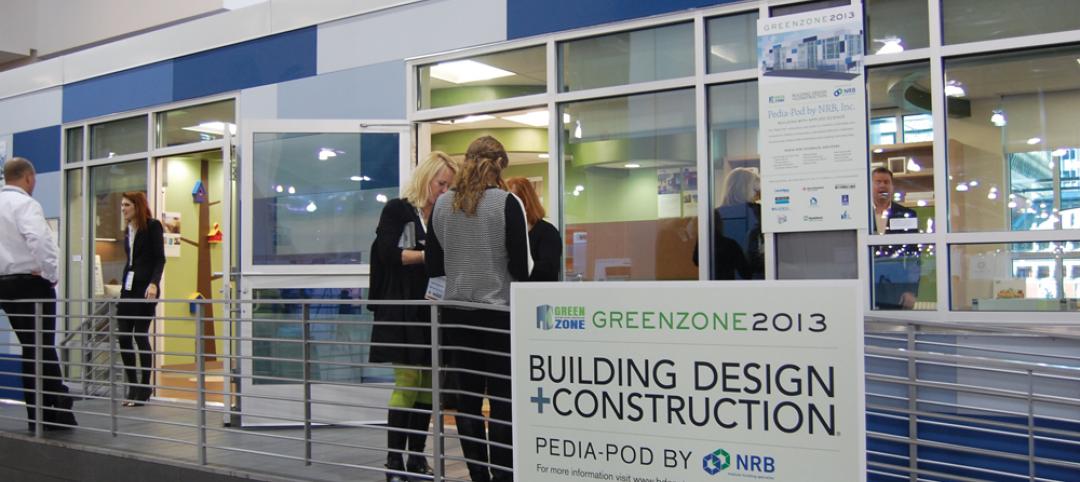WSP, the international engineering design and environmental consulting firm, will double its size in the Houston market by combining its existing operations there with the office of ccrd, a national MEP engineering and commissioning firm based in Houston, which WSP acquired last November.
The combined office, with about 60 employees, will be managed by David Sinz, PE, a vice president and managing director of WSP’s Houston office. David Duthu, PE, who was managing director of ccrd’s Houston office, is now co-leader of WSP’s national Science + Technology practice.
Aside from bolstering its Houston operations, the ccrd acquisition expanded WSP’s presence into markets throughout the Southeast and south-central U.S., according to WSP’s executive vice president Steve Burrows. (Founded in 1980, ccrd has offices in Austin, Texas, Dallas, Denver, Houston, Miami, Nashville, Tenn., Orlando, Fla., Phoenix, Richmond, Va., Kansas City, Mo., and Washington, D.C.)
David Cooper, PE, president of WSP’s U.S. Property & Building sector and chief commercial officer for WSP|Parsons Brinckerhoff, called the combination in Houston “a natural step forward.” He says the acquisition so far “has been everything both firms hoped it would be.”
Montreal-based WSP Global has 500 offices in 39 countries. Last Fall, it agreed to pay Balfour Beatty US$1.24 billion in cash to buy Parsons Brinckerhoff, a deal that increased WSP’s workforce by 77% to 31,000.
The purchase price for ccrd was not disclosed.
Separately, WSP and ccrd had already been active players and competitors in Houston’s healthcare, science, and technology sectors, having worked on innumerable hospitals, government, energy, and research construction projects. They are also active in Houston’s hospitality, commercial, residential, and industrial sectors.
Related Stories
| Dec 13, 2013
Safe and sound: 10 solutions for fire and life safety
From a dual fire-CO detector to an aspiration-sensing fire alarm, BD+C editors present a roundup of new fire and life safety products and technologies.
| Dec 13, 2013
AIA, MIT issue joint report on impact of design on public health
The research looks at the health of eight U.S. cities and lays out a path for translating the research into meaningful findings for policy makers and urban planners.
| Dec 11, 2013
Wyndham unveils hotel prototype for its Hawthorn Suites chain
The extended-stay hotel prototype reduces development costs by 46% for franchisees and enhances the overall guest experience.
| Dec 10, 2013
16 great solutions for architects, engineers, and contractors
From a crowd-funded smart shovel to a why-didn’t-someone-do-this-sooner scheme for managing traffic in public restrooms, these ideas are noteworthy for creative problem-solving. Here are some of the most intriguing innovations the BD+C community has brought to our attention this year.
| Dec 10, 2013
Modular Pedia-Pod: Sustainability in healthcare construction [slideshow]
Greenbuild 2013 in Philadelphia was the site of a unique display—Pedia-Pod, a modular pediatric treatment room designed and built by NRB, in collaboration with the editors of Building Design+Construction, SGC Horizon LLC, and their team of medical design consultants.
| Dec 9, 2013
Tips for designing higher education's newest building type: the learning commons
In this era of scaled-down budgets, maximized efficiencies, new learning methods and social media’s domination of face time, college and university campuses are gravitating toward a new space type: the learning commons.
| Dec 9, 2013
ULI: Real estate market in 2014 will be 'recovering from the recovery'
The U.S. commercial real estate market is gradually “recovering from the recovery” and will “gain momentum” in 2014, according to ULI CEO Patrick L. Phillips.
| Dec 9, 2013
Does technology help or hinder innovation?
Whether digital technology will help or hinder workplace insights remains a topic of ongoing debate. FastCo.Design features insights from business scholars on both sides of the issue.
| Dec 9, 2013
What is life cycle cost optioneering?
Life cycle cost optioneering is a way of assessing alternative design options, analyzing their long-term capital and operational costs to identify those with the lowest price tag, over the entire life cycle.
| Dec 6, 2013
French concert hall includes integrated musical elements [VIDEO]
La Métaphone, a concert hall in Ognies, France, is a 1,980-sm facility with the unique characteristic of being a structural musical instrument. The solar-powered building incorporates musical elements in its walls, which can be played by musicians inside or outside the facility.

















